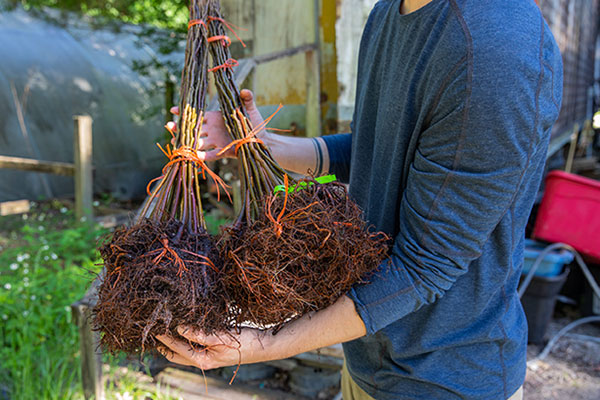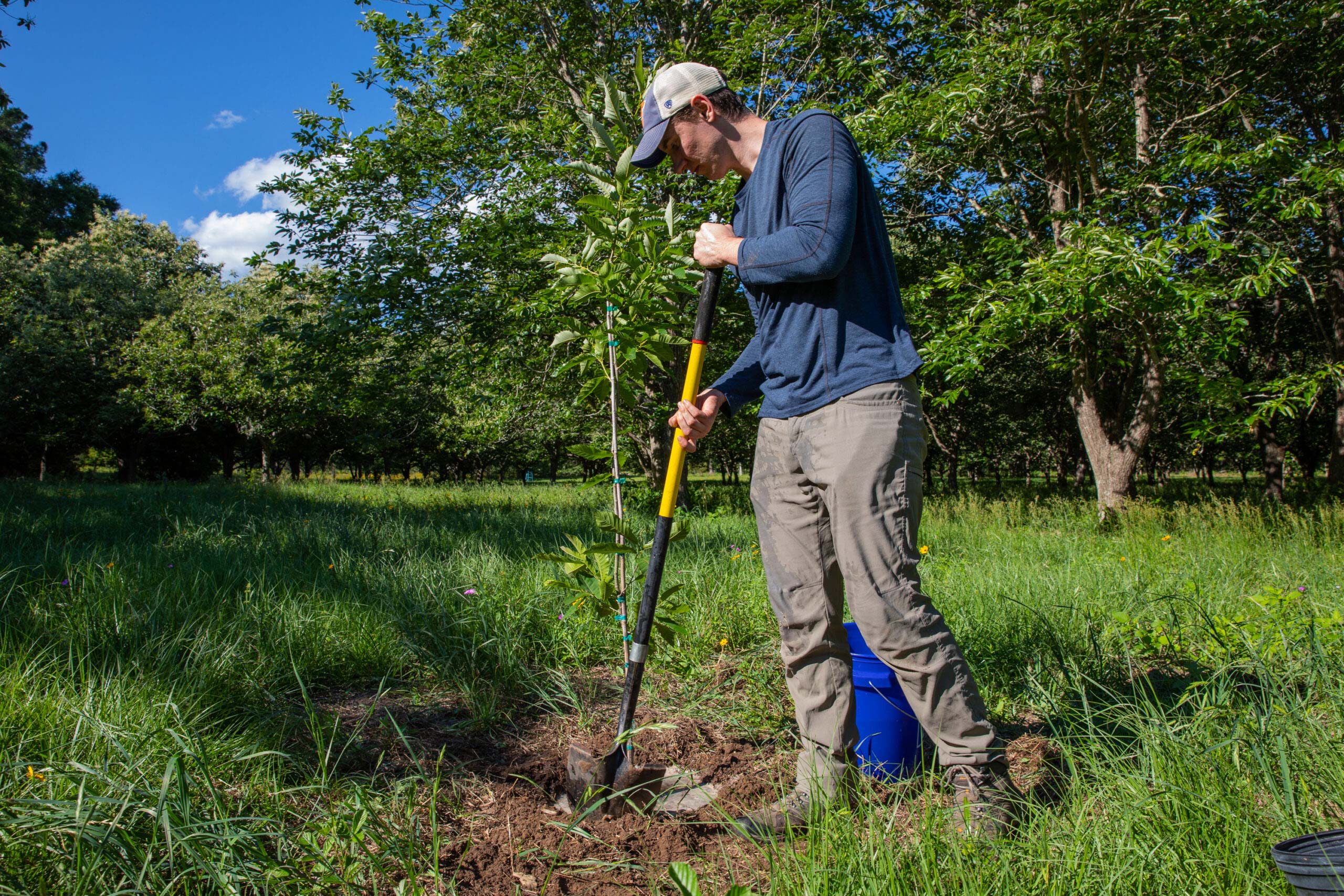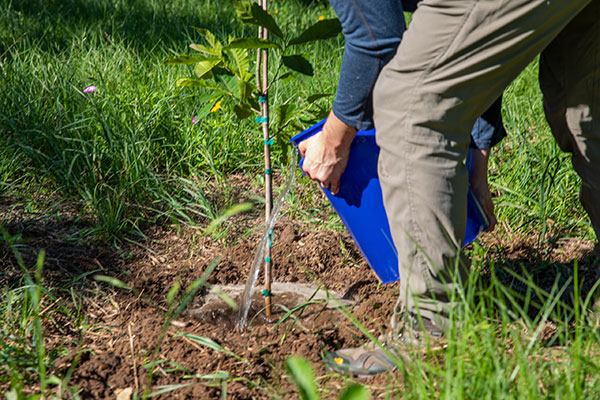5 Things to be Most Successful Planting Trees
Most folks know The 5 Ps: Proper Planning Prevents Poor Performance. It applies to many different endeavors, including planting mast orchards. However, we could spin it more positively and say: Proper Planting Produces Prosperous Plants. Regardless of how you phrase it, five critical steps will increase the productivity of hard and soft mast trees and shrubs.
Planning

The planting process begins with proper planning. Before ordering stock, it’s important to check that the varieties chosen are suitable to the USDA Plant Hardiness Zone of their destination. Don’t worry if you didn’t do it right. To ensure proper selection, the planting specialists at Chestnut Hill Outdoors list these zones for each of our products and then check every order to ensure the selected species are appropriate for their destination. That addresses the macro-climate, but the micro-climate must also be considered.
Site-specific conditions like soil type, pH and moisture content, available sunlight, and even temperature can vary considerably across a single property. We recommend planting in well-drained soils with a pH between 5 – 6.5 and full sunlight for most trees. Consideration should also be given to aspect and elevation. Southerly-facing slopes receive more sunlight and will generally be warmer. Conversely, low-lying areas trap cold air creating a less favorable micro-climate. So far, so good, and these steps will become more important in the next steps.
Unpacking

Plans were laid, orders made, and the long-awaited day and your trees finally arrived. It’s time to unwrap and inspect. We ship nursery stock with roots wrapped in a plastic bag to retain the hydrating gel that keeps them moist during shipment. Remove that, then inspect carefully to confirm roots are still moist and trees are undamaged. We go to great lengths to ensure our customers receive sound, healthy stock. However, sometimes things go awry during transit. Should you encounter any issues, contact our office immediately by calling 855-386-7826 or emailing chestnuthilloutdoors@gmail.com.
In addition to ensuring trees are sent to the proper zones, we also try to time shipping for optimal planting periods. If you are located in the southern U.S. (USDA zones 7-10), you can usually plant your trees right away. However, if temperatures are, or are expected to be unseasonably cold, it might be wise to wait for a few days. In that case, keep the plants inside their packaging in a cool, dark place where they can’t freeze, and keep the roots slightly moist until you are ready to plant.
If you live in the northern U.S. (USDA zones 5-6), you may need to wait a little longer – until the ground thaws – before planting. Store the trees similarly in a COOL dark place such as the garage or basement (35-50 degrees F). It’s important that the roots are not allowed to freeze and are kept moist but not too wet, or they will mold. The trees will remain dormant until the ground is warm enough to plant.
Planting

You selected the right site in the planning process. Now it’s the planting process that takes center stage. The Chestnut Hill Outdoors Learning Center provides more detailed instructions on proper planting, but here are some general guidelines. Start by digging a hole two times wider than your tree’s root system and deep enough that the tree will be planted at the same depth it grew in the nursery. This can be determined by examining the trunk for the point at the crown where the bark changes from greenish to brown. This should allow ample room for the roots. Do not bury the graft union if the tree is a grafted variety.
Next, re-fill the hole with native soil, lightly tamping to remove air pockets around the roots. If you choose the right site, the soil should only be amended if soil conditions are extremely poor. We do not recommend applying fertilizer or chemicals to newly planted trees. Now, create a water-holding basin around the hole, and you’re ready for the next step.
Watering

Ensuring that newly transplanted trees receive the proper amount of water is critical and is the most important factor in ensuring their successful start. During the dormant stage, they only need to be kept slightly moist. Once the buds break and the trees leaf out, they will need water regularly – at least twice per week throughout the growing season, more often during dry spells. How much water they need will depend on soil structure, temperatures, and rainfall. Again, you can find more detailed watering instructions in our Learning Center.
Competition
Though not as critical as watering, removing competition is also important to increasing plant productivity as weeds compete for moisture and soil nutrients. If you didn’t do so during the planting process, remove any weeds around the planting area, then install weed mats or mulch. Leaf litter and pine needles are preferred alternatives. Hay works but often contains weed seeds. Shredded or fine bark can also be used but avoid large bark nuggets that can rob nitrogen from the soil. Follow these five steps, and the only P left to consider is Patience while you wait for your plants to produce.


